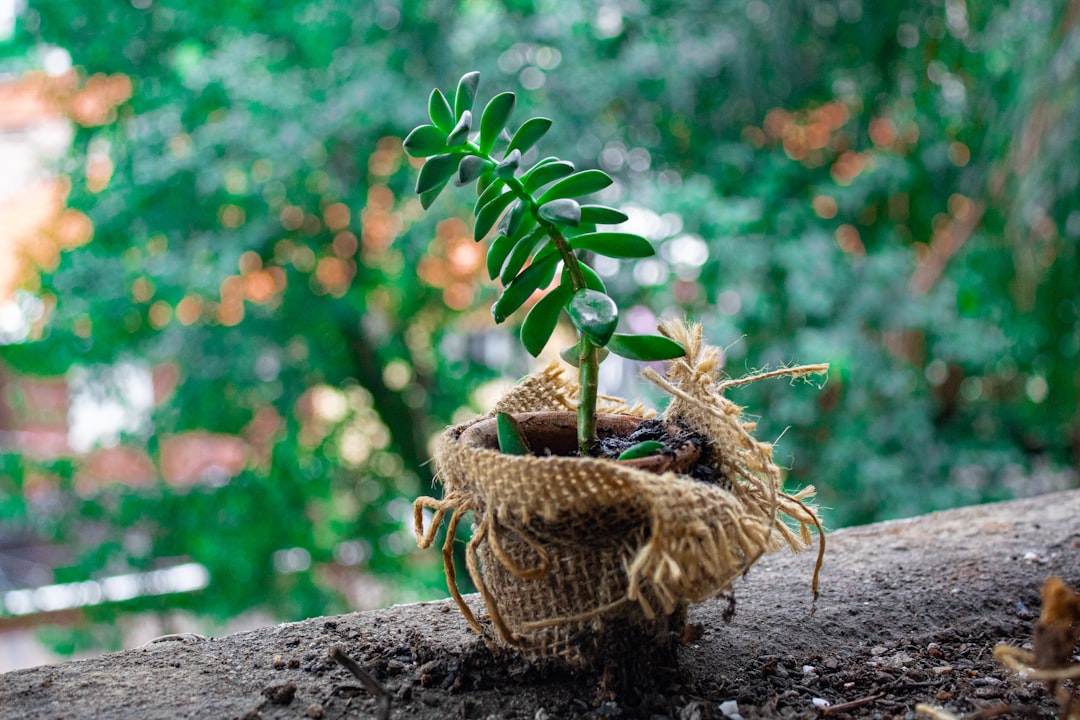The Secret to Thriving Money Trees at Home

Money trees, with their unique braided trunks and lush green leaves, have become a popular choice for indoor plant enthusiasts. Not only do they add a touch of natural beauty to any space, but they are also relatively easy to care for. In this article, we'll explore the key aspects of caring for money trees, from pruning and lighting to creating the perfect environment.
Pruning Your Money Tree
Pruning is an essential part of maintaining a healthy and attractive money tree. Regular pruning helps to control the size and shape of the plant, encourages new growth, and removes any dead or damaged leaves. When pruning your money tree, use sharp, clean pruning shears to make clean cuts. Start by removing any yellow or brown leaves, as these are likely to be dead or dying. You can also trim back any branches that are growing too long or in an undesirable direction. Be careful not to over-prune your money tree, as this can cause stress and damage to the plant. Aim to remove no more than one-third of the plant's foliage at a time.
Lighting Requirements
Money trees prefer bright, indirect light. They can tolerate some direct sunlight, but too much can scorch the leaves. Place your money tree near a window that receives plenty of light, but avoid placing it in direct sunlight for extended periods of time. If you don't have a window that provides enough light, you can also use artificial grow lights to supplement the natural light. When using grow lights, make sure to place them at the appropriate distance from the plant to avoid burning the leaves.
Watering Your Money Tree
Proper watering is crucial for the health of your money tree. These plants prefer to be kept evenly moist, but not soggy. Overwatering can lead to root rot, while underwatering can cause the leaves to wilt and drop. To water your money tree, wait until the top inch of soil is dry to the touch. Then, water the plant thoroughly, allowing the water to drain out of the bottom of the pot. Avoid letting the plant sit in standing water, as this can also lead to root rot. During the winter months, when the plant is dormant, you can reduce the frequency of watering.
Soil and Fertilizer
Money trees prefer well-draining soil that is rich in organic matter. You can use a commercial potting mix that is specifically formulated for indoor plants, or you can make your own by mixing equal parts of peat moss, perlite, and vermiculite. When fertilizing your money tree, use a balanced, water-soluble fertilizer that is formulated for indoor plants. Follow the instructions on the fertilizer package for the correct dosage and frequency of application. During the growing season, which is typically from spring to fall, you can fertilize your money tree every two to four weeks. During the winter months, when the plant is dormant, you can reduce the frequency of fertilizing to once every two to three months.
Creating the Perfect Environment
In addition to proper pruning, lighting, watering, and fertilizing, creating the right environment is also important for the health of your money tree. These plants prefer a warm, humid environment with temperatures between 65°F and 75°F. They can tolerate lower temperatures, but they may not grow as well. To increase the humidity around your money tree, you can place a humidifier near the plant, or you can place the pot on a tray filled with pebbles and water. Just make sure that the bottom of the pot is not sitting in the water, as this can lead to root rot. You can also mist the leaves of your money tree with water once or twice a day to increase the humidity.
Common Problems and Solutions
Like all plants, money trees can be susceptible to a variety of problems, including pests, diseases, and environmental stress. Some of the most common problems that money tree owners face include yellowing leaves, brown tips, and leaf drop. These problems can be caused by a variety of factors, including overwatering, underwatering, too much or too little light, and pests or diseases. To solve these problems, start by identifying the cause. If you suspect that your money tree is overwatered, reduce the frequency of watering and make sure that the soil is well-draining. If you suspect that your money tree is underwatered, increase the frequency of watering and make sure that the plant is getting enough water. If you suspect that your money tree is getting too much or too little light, move the plant to a different location. If you suspect that your money tree has a pest or disease problem, treat the plant with an appropriate pesticide or fungicide.
In conclusion, caring for a money tree is relatively easy as long as you follow the right steps. By providing your money tree with the right amount of pruning, lighting, watering, fertilizing, and creating the perfect environment, you can enjoy a healthy and beautiful plant for years to come. So, go ahead and add a money tree to your indoor plant collection today!